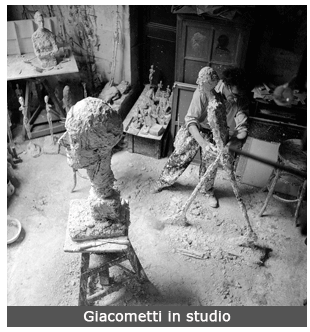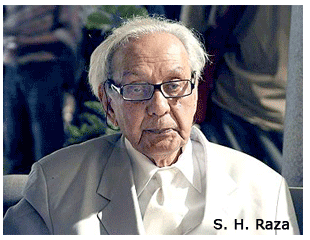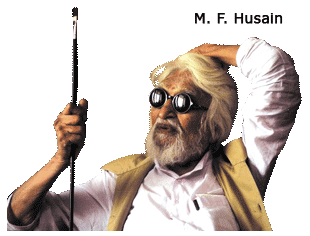- Prelude
- Guest Editor’s Column
- Hard Talk
- Eloquence of Silence
- The Age of Revivals: Gothic Revival Furniture
- Inkwell
- New Media : Living up to the chivalric code
- Universalizing Art through Individual Langue
- Speaking New Discourses
- Video Art of India- Gigi Scaria and his Videos
- Contemporary Trends of Sculpting
- In the News
- Artist Index and Statistics
- Market Insight
- Auction Reports
- The month that was
- Art Bengaluru
- Mumbai Artsighting
- Musings from Chennai
- Deccan Odyssey
- Delhi Dias
- In between – from Vadodara
- North-East Opsis
- A Tryst with Art in Madhya Pradesh
- Tradition and Beyond
- Reverie
- Indian (Sub) Way
- Creative Impulse
- Different hues of Aakriti
ART news & views
Market Insight
Volume: 2 Issue No: 8 Month: 9 Year: 2010
Our creations, their creations
Consider these world-records from international auction houses.
1. February 2010. Alberto Giacometti's Man Walking I sells at $104.3 million.
2. April 2010. Pablo Picasso's Nude Green Leaves and Bust sells for $106.5 million.
Both are 'world records', the latter toppling the former.
3. June 2010. Syed Haider Raza's Saurashtra sells for $3.49 million.
This again is a 'world record'.
Now consider the irony.
 Whereas the highest selling Indian artist can manage to notch up just $3.49, the highest selling European artist far outbids him at $106.5 million. The impression is simplethe league of Picasso, Giacometti or Warhol is at a much higher level to Raza, Souza and Husain.
Whereas the highest selling Indian artist can manage to notch up just $3.49, the highest selling European artist far outbids him at $106.5 million. The impression is simplethe league of Picasso, Giacometti or Warhol is at a much higher level to Raza, Souza and Husain.
Yet, according to every auction-house handout, as well as every art-market survey (which, incidentally are mainly driven by UK and US-based bodies), Picasso, Giacometti, Warhol, Husain, Raza and Souza are a few of the 'highest-priced' artists in the world.
Actually, there is a method in this madness. Because here you are called upon to witness a fine show of segregated blitzkrieg, resulting from a keen interest of first world outfits in the emerging, immensely potential and mostly virgin secondary art market in Asia in general and India in particular.
And here's how, we decode it.
 It is a standard practice for auction houses to segregate what they strategically call 'Indian artists' and 'International artists'. Because such segregations help in projecting a rosy picture of the Indian art scene, suiting the interest of these international outfits. Also consider the fact that such outfits will take all care to strategically separate sales featuring even young Westerners. They will never be pitched even with veteran Asians.
It is a standard practice for auction houses to segregate what they strategically call 'Indian artists' and 'International artists'. Because such segregations help in projecting a rosy picture of the Indian art scene, suiting the interest of these international outfits. Also consider the fact that such outfits will take all care to strategically separate sales featuring even young Westerners. They will never be pitched even with veteran Asians.
That is because the world has come to understand that both in terms of quality and content, art works emerging from the Indian subcontinent has a major future potential. At the same time, the crème de la crème of the international market is yet not ready to offer the Indian platter at par with their own creations, since that would mean decades of planning and media blitzkrieg gone for a toss.
Hence, the standard expression is always something that Zara Porter Hill, International Head of Indian Art at Sotheby's had to say after their immensely successful Indian art sale earlier this year-- “We are very proud of the exceptional prices for modern Indian paintings, where 74 works sold for $5.4 million -- the dynamic bidding leading to a staggering 97% sold by value rate.” Consider this in relation, to standard handout reactions after so-called International auctions, featuring mostly European and American artists. Jennifer Roth, Director of Fine Arts at Sotheby's, after what was touted as a fairly successful Contemporary International Art auction in March this year had just this to say: “We were very pleased with the result, which was comfortably within the presale estimate of $4.8/6.9 million.”
 So what's the dough? While lots for Indian artists could garner $5.4 million, contemporary European and American art notched up a high bid of $ 6.9 million, a difference of just $1.5 million at best. In the international art market perspective, that's peanuts, when one considers the exposure and market push international artists command.
So what's the dough? While lots for Indian artists could garner $5.4 million, contemporary European and American art notched up a high bid of $ 6.9 million, a difference of just $1.5 million at best. In the international art market perspective, that's peanuts, when one considers the exposure and market push international artists command.
And at the same time, the art connoisseur or a potential collector is continuously fed with the idea of 'blurring borders', where Indian art can not be separated in terms of value and aesthetics from international art. However, veteran critics consider Indian creations to have a much stronger content than what their international contemporaries offer at this moment of time. “The conflict of life that we experience is noting compared to the life that our contemporaries enjoy in Europe and America. There, artists are supported handsomely by the government. Here, we have to fend for ourselves. Hence, while our works will automatically bring in the reality of this conflict, their work will become more and more internal, and hence, ideologically obtuse,” is what a young contemporary Indian artist had to say recently, after an extended session with his Swedish counterpart as part of a pretty high-profile exchange programme. And in agreement with him, a veteran art-market observer had this to offer “When it comes to the production part, with an open economy, comparatively better money and access to materials meeting global standards, as far as technical quality is concerned, Indian creations do not lag behind international standards any more.”
 Hence, it is the content that makes the difference. And the content is definitely richer among young Indian artists, given the conflict of life they are continuously subject to, as compared to their European or American counterparts.
Hence, it is the content that makes the difference. And the content is definitely richer among young Indian artists, given the conflict of life they are continuously subject to, as compared to their European or American counterparts.
However, in the International market, Indians still have a lot to achieve, and that can only happen when they get institutional promotional support enjoyed by their overseas contemporaries.
That can only be achieved when the secondary Indian art market becomes bold enough to tackle a Warhol and a Husain with the same élan. As long as that does not happen, the price differential will stay, and International Auction Houses will go on reaping the fruits of the rich Indian harvest, simply by paying lip service.
1. February 2010. Alberto Giacometti's Man Walking I sells at $104.3 million.
2. April 2010. Pablo Picasso's Nude Green Leaves and Bust sells for $106.5 million.
Both are 'world records', the latter toppling the former.
3. June 2010. Syed Haider Raza's Saurashtra sells for $3.49 million.
This again is a 'world record'.
Now consider the irony.
 Whereas the highest selling Indian artist can manage to notch up just $3.49, the highest selling European artist far outbids him at $106.5 million. The impression is simplethe league of Picasso, Giacometti or Warhol is at a much higher level to Raza, Souza and Husain.
Whereas the highest selling Indian artist can manage to notch up just $3.49, the highest selling European artist far outbids him at $106.5 million. The impression is simplethe league of Picasso, Giacometti or Warhol is at a much higher level to Raza, Souza and Husain. Yet, according to every auction-house handout, as well as every art-market survey (which, incidentally are mainly driven by UK and US-based bodies), Picasso, Giacometti, Warhol, Husain, Raza and Souza are a few of the 'highest-priced' artists in the world.
Actually, there is a method in this madness. Because here you are called upon to witness a fine show of segregated blitzkrieg, resulting from a keen interest of first world outfits in the emerging, immensely potential and mostly virgin secondary art market in Asia in general and India in particular.
And here's how, we decode it.
 It is a standard practice for auction houses to segregate what they strategically call 'Indian artists' and 'International artists'. Because such segregations help in projecting a rosy picture of the Indian art scene, suiting the interest of these international outfits. Also consider the fact that such outfits will take all care to strategically separate sales featuring even young Westerners. They will never be pitched even with veteran Asians.
It is a standard practice for auction houses to segregate what they strategically call 'Indian artists' and 'International artists'. Because such segregations help in projecting a rosy picture of the Indian art scene, suiting the interest of these international outfits. Also consider the fact that such outfits will take all care to strategically separate sales featuring even young Westerners. They will never be pitched even with veteran Asians. That is because the world has come to understand that both in terms of quality and content, art works emerging from the Indian subcontinent has a major future potential. At the same time, the crème de la crème of the international market is yet not ready to offer the Indian platter at par with their own creations, since that would mean decades of planning and media blitzkrieg gone for a toss.
Hence, the standard expression is always something that Zara Porter Hill, International Head of Indian Art at Sotheby's had to say after their immensely successful Indian art sale earlier this year-- “We are very proud of the exceptional prices for modern Indian paintings, where 74 works sold for $5.4 million -- the dynamic bidding leading to a staggering 97% sold by value rate.” Consider this in relation, to standard handout reactions after so-called International auctions, featuring mostly European and American artists. Jennifer Roth, Director of Fine Arts at Sotheby's, after what was touted as a fairly successful Contemporary International Art auction in March this year had just this to say: “We were very pleased with the result, which was comfortably within the presale estimate of $4.8/6.9 million.”
 So what's the dough? While lots for Indian artists could garner $5.4 million, contemporary European and American art notched up a high bid of $ 6.9 million, a difference of just $1.5 million at best. In the international art market perspective, that's peanuts, when one considers the exposure and market push international artists command.
So what's the dough? While lots for Indian artists could garner $5.4 million, contemporary European and American art notched up a high bid of $ 6.9 million, a difference of just $1.5 million at best. In the international art market perspective, that's peanuts, when one considers the exposure and market push international artists command. And at the same time, the art connoisseur or a potential collector is continuously fed with the idea of 'blurring borders', where Indian art can not be separated in terms of value and aesthetics from international art. However, veteran critics consider Indian creations to have a much stronger content than what their international contemporaries offer at this moment of time. “The conflict of life that we experience is noting compared to the life that our contemporaries enjoy in Europe and America. There, artists are supported handsomely by the government. Here, we have to fend for ourselves. Hence, while our works will automatically bring in the reality of this conflict, their work will become more and more internal, and hence, ideologically obtuse,” is what a young contemporary Indian artist had to say recently, after an extended session with his Swedish counterpart as part of a pretty high-profile exchange programme. And in agreement with him, a veteran art-market observer had this to offer “When it comes to the production part, with an open economy, comparatively better money and access to materials meeting global standards, as far as technical quality is concerned, Indian creations do not lag behind international standards any more.”
 Hence, it is the content that makes the difference. And the content is definitely richer among young Indian artists, given the conflict of life they are continuously subject to, as compared to their European or American counterparts.
Hence, it is the content that makes the difference. And the content is definitely richer among young Indian artists, given the conflict of life they are continuously subject to, as compared to their European or American counterparts. However, in the International market, Indians still have a lot to achieve, and that can only happen when they get institutional promotional support enjoyed by their overseas contemporaries.
That can only be achieved when the secondary Indian art market becomes bold enough to tackle a Warhol and a Husain with the same élan. As long as that does not happen, the price differential will stay, and International Auction Houses will go on reaping the fruits of the rich Indian harvest, simply by paying lip service.